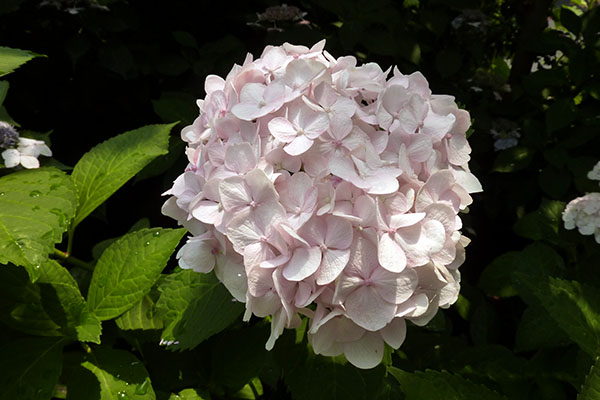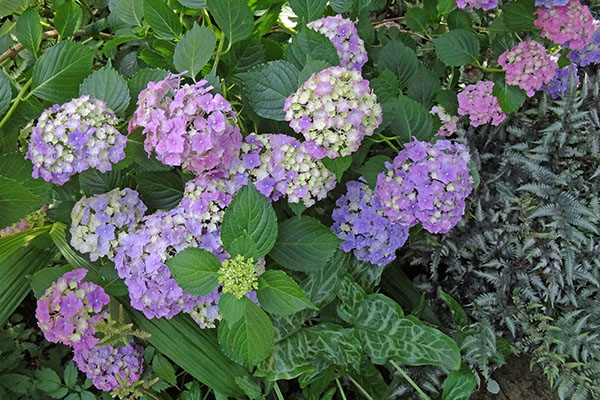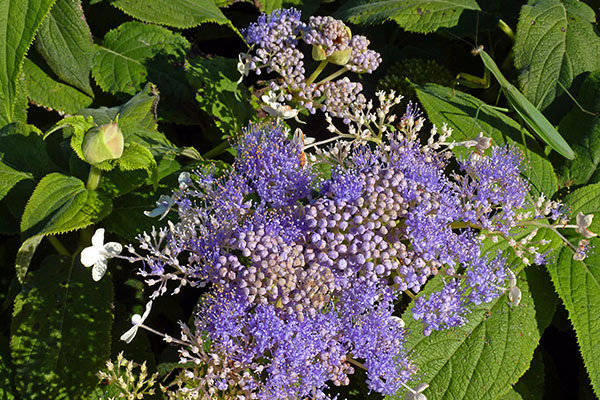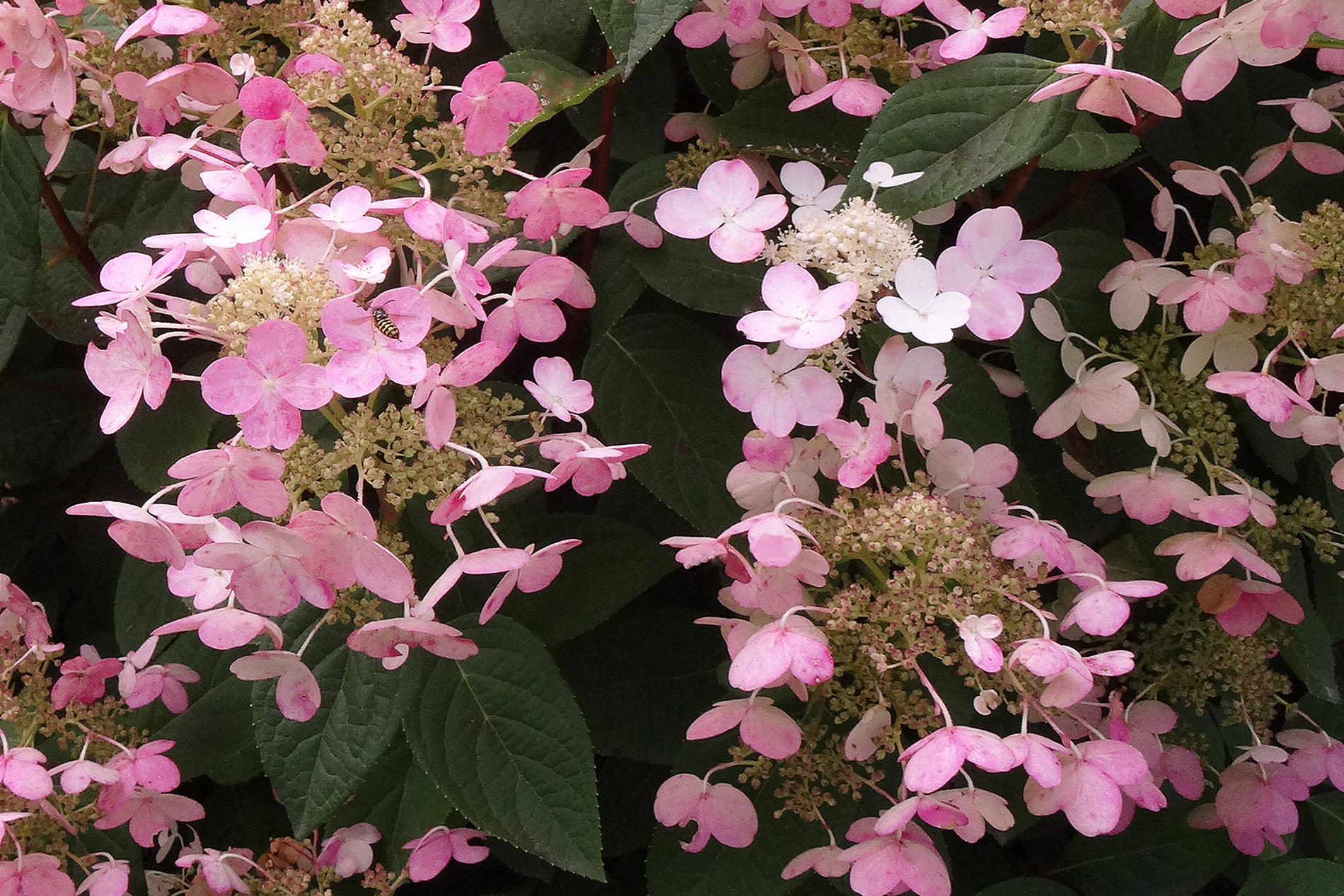Hydrangea macrophylla
Bigleaf Hydrangea
Japan, Korea
Large, erect deciduous shrub
Will withstand seashore conditions and actually flourish near the shore; full sun or partial shade, shade more imperative in Zones 7 to 9.
Hydrangea macrophylla is a favorite garden shrub for most areas east of the Mississippi River. It grows best in the South because cold winters kill off the flower buds and prevent the shrub from flowering in colder climates. Under ideal situations, it will grow 3-6 feet tall and equally as wide. Leaves are dark to medium green, 4 to 8 inches long, two-thirds as wide, and waxy in texture. Flowers are borne in July through August and vary in color from white, pink, purple, to dark blue. Flower color is dependant on the amount of aluminum present in the soil. Generally more acidic soils, around 5.0-5.5, (like the ones in the east coast) will induce blue flowers and more alkaline soils will induce pink or white flowers. The flower clusters are large, broad, falt-topped, multi-branched, and terminal. Hydrangea macrophylla is ideal for shady shrub borders of warm Southern gardens. It grows well in coastal gardens. There are nearly 500 cultivars available, so it is likely there is a good choice for nearly any gardener's situation.
Medium to dark green in summer
Flower buds are .5-.66 inches long, and are green, brown, or purple. Vegetative buds are smaller.
Stems are gray or straw-brown in color.
pink, blue, purple, or white
.25 inch long capsule holds many tiny seeds.
Softwood cuttings, May, June, July. Also semi-hardwood and hardwood cuttings will root. Rooting hastened with IBA treatment, but no treatment is necessary. Place cuttings in 3:1 perlite/ peat media and mist. Should root in 10-20 days. Remove from mist and fertilize.
A significant amount of cultivars exist of this species. 'Ayesha' - The unusual flower is bicolored; pale pink or mauve on the edge to white in the center of the cup shaped petals of this mophead inflorescence.
'Blaumeise' - A stunning lacecap developed in Switzerland, 'Blaumeise' has large flat flowers composed of very wide deep purple blue sterile florets surrounding tiny indigo blue fertile flowers.
'Hororb' Abracadabra™ Orb™ - A member of the Abracadabra™ hydrangea series. The sterile flowers of this mophead inflorescence emerge green and peach before maturing to hot pink (blue in acid). The mahogany-colored stems offer a dramatic contrast to the flower color.
Lynn's Let's Dance® Starlight-- A member of the Let's Dance® series, with very compact, reblooming, lacecap hydrangea flowers on both new and old wood providing an extended season of vivid blue to pink color depending on soil pH.

'Madame Emile Mouillere' - Considered by the late great gardener and writer Christopher Lloyd of Great Dixter to be the best pure white mophead. Tightly packed serrated flowers open wide and push against each other to produce a lacy work of art. Flowers age to blush pink or green and are great to cut and dry.
‘SMHMP1’ Paraplu™ - The intense color of this dwarf mophead varies from bubblegum pink to intense hot pink, possibly with some purple in acidic soils.
'Tokyo Delight' - An old lacecap favorite with outer white sterile flowers that slowly mature to burgundy around bright blue to mauve fertile flowers.






